Throughout the medieval history of Japan, it was the shoguns that held the real power in the country. As powerful military dictators, they were the de facto rulers of Japan, subordinate only to the godlike emperor. But to gain this lucrative and powerful position, samurai lords had to rise through the ranks using their cunning and intrigue. The story of Tokugawa Ieyasu is an iconic tale of perseverance, patience, and a steady rise from rags to riches. To rise from a hostage to the most powerful man in Japan was certainly an unbelievable task, but Tokugawa Ieyasu did it, and, in the process, helped transform Japan into a unified, modern state.
“Life is like unto a long journey with a heavy burden. Let thy step be slow and steady, that thou stumble not. Persuade thyself that imperfection and inconvenience are the lot of natural mortals, and there will be no room for discontent, neither for despair. When ambitious desires arise in thy heart, recall the days of extremity thou hast passed through. Forbearance is the root of all quietness and assurance forever. Look upon the wrath of thy enemy. If thou only knowest what it is to conquer, and knowest not what it is to be defeated; woe unto thee, it will fare ill with thee. Find fault with thyself rather than with others.”
-Tokugawa Ieyasu
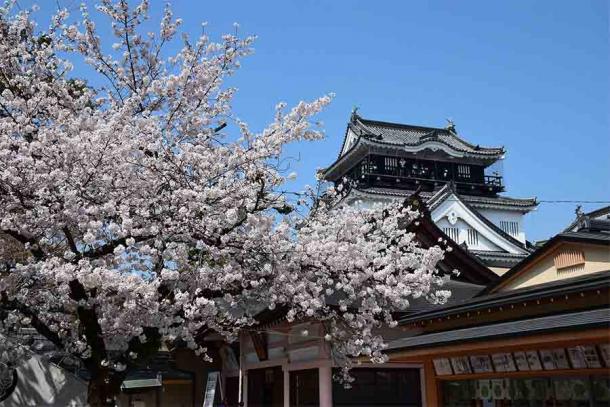
Tokugawa Ieyasu was born at Okazaki Castle in 1543 AD. (Bariston / CC BY-SA 4.0 )
From Rags To Riches: The Early Steps of Tokugawa Ieyasu
Tokugawa Ieyasu’s achievements are quite unparalleled in Japanese history and definitely a source of inspiration, showing that with patience anything can be achieved. He was born in 1543 AD, as a son of a minor daimyō (powerful feudal lord) Matsudaira Hirotada (松平 廣忠).
Hirotada was the leader of the Matsudaira clan, a struggling and young samurai clan that claimed its roots in the famed Minamoto clan . The birth name of Tokugawa Ieyasu was Matsudaira Takechiyo ( 松平 竹千代), but he changed it later in his life.
These powerful daimyō noblemen were often intriguing amongst themselves and had plenty of rivalry and conflicts between their clans. The Matsudaira clan was in a particularly bad state of affairs in the years when Tokugawa Ieyasu was born. As the result of such conflicts, he was taken as a hostage, while still a young boy, by a daimyō rival of his father. His father was murdered by his vassals when Ieyasu was just 6 years old, and his youth continued in the same way, as a hostage.
With the death of Ieyasu’s father, the lands of the Matsudaira clan were essentially lost to their rivals. At this time, Ieyasu’s position held little prospect for greatness, but the young boy was determined to change his own fate. Years passed and the boy grew into a young man, one with keen vision and ambition. By 1560 he managed to at last free himself from the influence of the rival Imagawa clan that held him as a (respected) hostage.
Ieyasu recognized the potential of an alliance with the powerful general Oda Nobunaga . After the latter’s magnificent victory in the Battle of Okehazama against Imagawa Yoshimoto, young Ieyasu placed himself under Nobunaga’s rule and began shaping his illustrious future one step at a time.
Although no more than 15 years old at the time of his alliance with Oda Nobunaga, Ieyasu was nevertheless a skilled young man and already a veteran in leadership and combat. He also had the luck to be a contemporary of many legendary Japanese historical figures, such as Hattori Hanzō, Oda Nobunaga, Toyotomi Hideyoshi , and others.
Through the alliance with Oda Nobunaga, Tokugawa Ieyasu was able to reclaim the ancestral seat of his clan and to reclaim his position as a daimyō lord. His rule was marked with shrewd moves and brilliant military leadership. And he expanded his territories step by step through a combination of useful alliances and decisive action. Making an alliance with the head of the Takeda clan, Takeda Shingen, he managed to destroy the Imagawa clan, taking their territories. Later on, he warred with Takeda as well, eventually also conquering his lands.
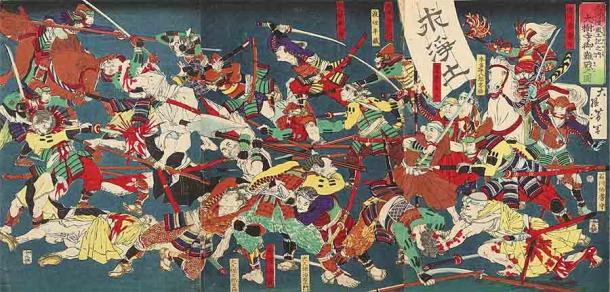
Tokugawa Ieyasu, with help from the Jodo monks of the Daijuji Temple, defeats the Ikkō-ikki at the battle of Azukizaka, 1564 AD. (Yoshitoshi / Public domain )
Restoring His Father’s Lands In A Major National Upheaval
By 1567, Ieyasu was the master of Mikawa Province, which was the original seat of his family. At this time, he was a proven leader and so decided to start his own family name, Tokugawa. He gained imperial approval for this change and thus became the head of the Tokugawa clan, while still claiming descent from the Matsudaira and Minamoto clans.
In the following years, Ieyasu remained a staunch ally and nominal vassal of the legendary Oda Nobunaga, and provided help in several decisive battles, as well as the eventual defeat of the Takeda clan. The conflicts with the Takeda clan lasted for almost a decade, and in this time the prominence of Tokugawa Ieyasu rose steadily and his skill in battle became uncontested.
Major events were unfolding at this time. Right after the destruction of the Takedas, Oda Nobunaga, Japan’s central figure at the time, was betrayed and assassinated in Kyoto in 1582. Initially, Ieyasu sided with the remnants of the Oda clan, but it was quickly collapsing without the powerful leadership it once had. Ieyasu’s choice placed him at odds with a prominent daimyō, Toyotomi Hideyoshi, who acted quickly and became the successor to Oda Nobunaga. However, Ieyasu managed to avoid an open clash and soon became a vassal of Hideyoshi, once more siding with the winning faction and continuing his rise.
By 1590, Toyotomi Hideyoshi and his allies managed to remove another key opponent, the Hōjō clan. Immediately after his victory over the Hojo, Tokugawa Ieyasu received an order that would change his life.
He was ordered to relocate his domain to the plains of the Kantō region. Doing so was a big risk for his power. He was abandoning his hard-won territories and had to rely on the loyalty of Hōjō samurai who were his enemies up to that point. But Ieyasu “took the plunge” and soon established his new seat of power in the fishing village of Edo. There he built his new castle. Edo would later become Tokyo, the capital of modern Japan.
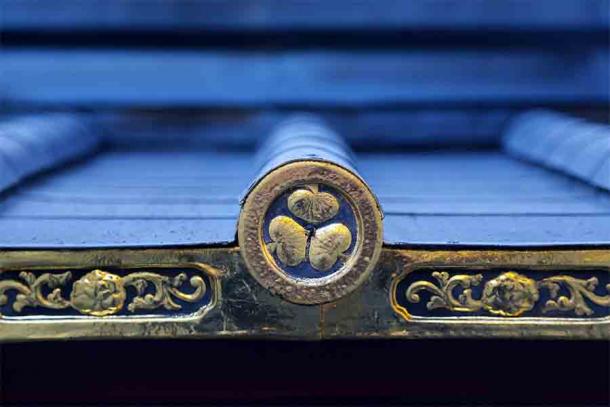
The clan symbol of the Tokugawa Shogunate founded by Japan’s most powerful shogun, Tokugawa Ieyasu. ( photographyttl / Adobe Stock)
The move to this new region was the total opposite of what was expected. It was risky but Ieyasu made it work. His rise to power was stellar as he secured the loyalty of the Hōjō samurai, expanded his lands, and reworked the infrastructure of the Kantō region. It took him just a few years to make the region one of the richest in Japan, and to make himself the second most powerful lord of Japan.
In no time, he became the most powerful of the Five Great Elders, i.e., the five most powerful feudal lords in Japan. If he had refused to migrate from his original lands, his fate might have been totally different. But he proved that risk always has its merits.
When Toyotomi Hideyoshi died after a brief and harsh illness in 1598, Ieyasu truly became the most powerful lord in Japan, and the strongest of the Five Elders. But Tokugawa Ieyasu understood that he could not stop his rise there. Since the successor to Toyotomi Hideyoshi was only five years old, Ieyasu used this chance to gain increasing independence. He began forging alliances with like-minded lords, especially those who were enemies of the late Toyotomi Hideyoshi.
This degree of independence piqued the interest of the other Five Elders and they soon sought to put a stop to Ieyasu’s rise. The first was Ishida Mitsunari, a top advisor to the late Hideyoshi, and the other was the powerful Mōri Terumoto. Together, they assembled a powerful army to subjugate Tokugawa Ieyasu and stop his stellar rise to power.
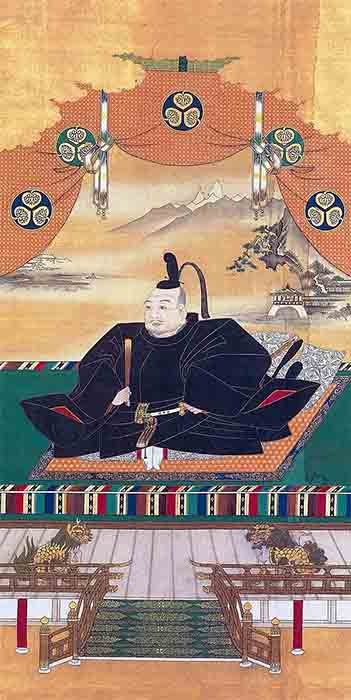
Portrait of shogun Tokugawa Ieyasu by Kanō Tannyū (1602-1674). (Kanō Tan’yū / Public domain )
The Battle Of Sekigahara Swiftly Eliminated Ieyasu’s Enemies
These opposed factions soon met on the field of battle. What resulted was one of the most important battles in Japan’s entire feudal history: the Battle of Sekigahara.
The battle took place on October 21st, 1600 AD, and over 200,000 men clashed on the field of Sekigahara. Although at a tactical disadvantage, Tokugawa Ieyasu managed to claim a decisive and brutal victory. He destroyed his opponents and eventually saw his enemy Ishida Mitsunari executed. He seized the territories of roughly 93 defeated lords and redistributed it to his allies.
With this unparalleled victory, Tokugawa Ieyasu gained control over Japan and finally received the title of shōgun from the emperor in 1603. He was 60 years old at the time. It took him most of his life to reach this position and showed that patience was the mother of success. But it was worth it! Having the ability to command hundreds of thousands of soldiers, he had complete political and military domination over the country.
Soon after, Tokugawa Ieyasu solidified his Tokugawa Shogunate , the feudal military government of Japan until 1867. It was the start of the so-called Edo, or Tokugawa Period, which would last for the next 260 years.
He also began major work on his Edo Castle headquarters, conducting major civil engineering work that would transform it into the most powerful castle in Japan. It is today the seat of the Japanese imperial family. The town managed to grow from a small fishing village to a metropolis of tens of thousands of citizens, all during Ieyasu’s lifetime.
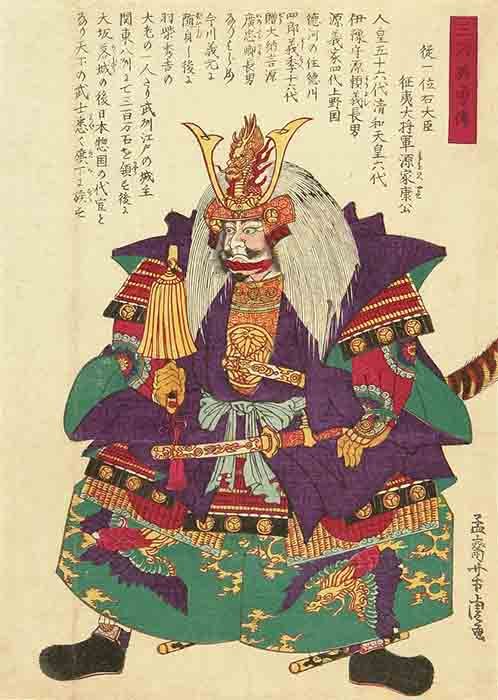
Woodblock (ukiyoe) print of Shogun Tokugawa Ieyasu (1543 -1616), the founder of the Tokugawa shogunate, which lasted for nearly 300 years. (Utagawa Yoshitora / Public domain )
Surprisingly, Tokugawa Ieyasu abdicated after just two years as a shogun. He stepped down from the position in favor of his son, Tokugawa Hidetada, but although retired he was still the head of the clan and the ruler of Japan.
However, even though he was in his sixties and retired, he still faced opponents and looked to remove any and all potential threats to his shogunate, no matter how small they were. One such threat was the heir of late Toyotomi Hideyoshi, a young man named Toyotomi Hideyori. This young lord ruled from his seat at Osaka Castle, and it was there that many of Ieyasu’s opponents flocked.
Seeking to bring this to an end, Ieyasu found an obscure and ridiculous reason to lay siege to Osaka. He conducted two consecutive sieges and succeeded. He killed all the defenders of Osaka Castle and the last living members of the Toyotomi family. Young lord Toyotomi Hideyori committed suicide, and thus the line of the Toyotomi clan was extinguished. This shows us how ruthless a ruler Tokugawa Ieyasu was, and how merciless he could be in dealing with his opponents.
In the following year, Ieyasu issued a number of important edicts most of which were created to centralize his power and to limit the rights of regional lords. The first such edict limited the military powers of these lords by allowing them to have only a single castle in their domain. Next he issued the Laws for the Military Houses, again limiting the lords through a strict code of conduct. Gradually, after limiting the powers of the daimyo lords, he extended his dominance over the imperial court as well. Eventually, he managed to completely remove all political power from the emperor and his court in Kyoto.
Moreover, during Ieyasu’s rule foreign relations were significantly improved. He oversaw diplomatic affairs with Portugal, England, and the Netherlands, establishing firm trade deals that greatly boosted the economy of Japan.

Final resting place of Tokugawa Ieyasu at the incredible Nikko Toshogu Shrine, northeast of modern-day Tokyo. ( Public domain )
A Lifetime Of Patient Power Building
Tokugawa Ieyasu abruptly became ill in 1616. His health began deteriorating after a hunting trip, and several diagnoses came through. Some said that he fell ill due to eating a dish called sea bream tempura, but the more likely reason was either syphilis or stomach cancer. The illness gradually overtook him, and he died on June 1st, 1616, aged 73.
He was originally buried at Kunōzan Shrine in modern day Shizuoka Prefecture. However, in 1617 he was posthumously deified as Tōshō Daigongen (“Great Gongen, Light of the East”) and his mortal remains were enshrined at the Nikkō Tōshōgū Shrine in present-day Tochigi Prefecture. It is to this day an extremely popular tourist destination.
A warrior, a scholar, a shrewd diplomat, and a ruthless military commander Tokugawa Ieyasu rose from nothing to everything. Starting as a hostage in a collapsing clan, he sought to overturn his own fate and challenge destiny. With skill and ambition, fueled by patience, he became the most powerful man in Japan, changing its future fundamentally and solidifying the foundations of a centralized, modern Japanese nation. His descendants are still alive today!
“The strong manly ones in life are those who understand the meaning of the word patience. Patience means restraining one’s inclinations. There are seven emotions: joy, anger, anxiety, adoration, grief, fear, and hate, and if a man does not give way to these he can be called patient. I am not as strong as I might be, but I have long known and practiced patience. And if my descendants wish to be as I am, they must study patience.”
-Tokugawa Ieyasu
Top image: Tokugawa Ieyasu was the epitome of the rags to riches possibilities for Japanese samurai. Source: Dusan Kostic / Adobe Stock
By Aleksa Vučković
References
Atsushi, K. 2020. Tokugawa Ieyasu and the Founding of the Edo Shogunate. Nippon.com. [Online] Available at:
https://www.nippon.com/en/japan-topics/b06907/
Sadler, A. L. 2009. Shogun: The Life of Tokugawa Ieyasu. Tuttle Publishing.
Yonemoto, M. 2003. Mapping Early Modern Japan: Space, Place, and Culture in the Tokugawa Period, 1603-1868. University of California Press.
 RSS Feed
RSS Feed















 March 16th, 2021
March 16th, 2021  Awake Goy
Awake Goy  Posted in
Posted in  Tags:
Tags: 













